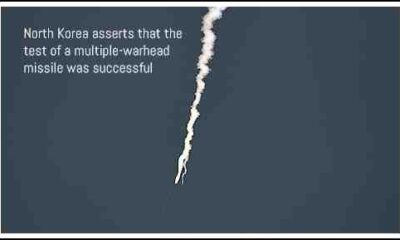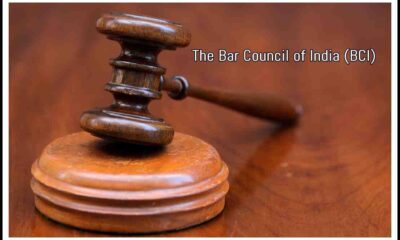Aditya L1
Aditya L1 Completes Second Earth-Bound Manoeuvre Successfully; Third Manoeuvre Set for September 10: ISRO
Published
10 months agoon

Before entering the transfer orbit towards the Lagrange point L1, the spacecraft will do two more earthbound orbital movements
The second earth-bound manoeuvre for Aditya L1, the first Indian mission to study the Sun in orbit, was successfully completed in the wee hours of Tuesday, according to ISRO. The mission was carried out by ISRO’s Telemetry, Tracking and Command Network (ISTRAC).
“From ISTRAC, Bengaluru, the second Earth-bound movement (EBN#2) is successfully carried out. During this operation, the satellite was tracked by ISTRAC/ISRO ground stations in Mauritius, Bengaluru, and Port Blair. The new orbit obtained is 282 km by 40225 km, according to a statement from ISRO on X (formerly Twitter).
It stated that the following manoeuvre (EBN#3) is planned for September 10, 2023, about 02:30 IST.
The first Indian space observatory, Aditya-L1, will observe the Sun from a halo orbit around the first Sun-Earth Lagrangian point (L1), which is around 1.5 million kilometres from the planet.
On September 3, the first earthbound movement was executed successfully.
Before entering the transfer orbit towards the Lagrange point L1, the spacecraft will do two more earthbound orbital movements. After roughly 127 days, Aditya-L1 is anticipated to reach the planned orbit at the L1 point.
On September 2, the Aditya-L1 spacecraft was successfully launched by ISRO’s Polar Satellite Launch Vehicle (PSLV-C57) from the Satish Dhawan Space Centre (SDSC), Sriharikota.
The Aditya-L1 spacecraft was successfully injected into an elliptical orbit of 235×19500 kilometres around the Earth after a mission duration of 63 minutes and 20 seconds.
A satellite positioned in a halo orbit around the L1 point, according to ISRO, has the significant benefit of continuously seeing the Sun without any occultation or eclipses. This will provide us a better advantage in real-time observation of solar activities and their impact on space weather.
Aditya-L1 contains seven scientific payloads that were produced domestically by ISRO and national research organisations, such as the Inter-University Centre for Astronomy and Astrophysics (IUCAA) in Pune and the Indian Institute of Astrophysics (IIA), Bengaluru.
The payloads’ electromagnetic particle and magnetic field detectors will be used to observe the photosphere, chromosphere, and the Sun’s outermost layers (the corona).
Read also:-Udhayanidhi is steadfast in his intention to put a stop to Sanatan Dharma: Said: PM Modi also discusses a Congress-free India; kill no one, remove no one
Four payloads use the unique vantage point L1 to observe the Sun directly, while the remaining three payloads conduct in-situ particle and field studies at the Lagrange point L1. This allows for significant scientific research on the propagation of solar dynamics in the interplanetary medium.
The most important data to comprehend the issue of coronal heating, coronal mass ejection, pre-flare and flare activities and their features, dynamics of space weather, and propagation of particles and fields is anticipated to be provided by the Aditya L1 payloads.
A small object prefers to stay in one of five Lagrangian points (or parking areas) between the Earth and the Sun, according to scientists. The Italian-French mathematician Joseph-Louis Lagrange is honoured with the name of the Lagrange Points for his prize-winning paper, “Essai sur le Problème des Trois Corps, 1772.” Spacecraft can use these locations in space to stay there for longer periods of time while using less fuel.
The gravitational attraction of the Sun and the Earth, which are at a Lagrange point, equals the centripetal force required for a small object to move with them.
You may like
-


North Korea asserts that the test of a multiple-warhead missile was successful
-


The Student Wing of Congress storms the Exam Body NTA office and locks it from within
-


“During President Murmu’s address to Parliament, PM Modi was shown 73 times, and LoP Rahul Gandhi was shown six times”: Congress
-


NASA contracts Elon Musk’s SpaceX to deorbit the International Space Station in 2023.
-


A Caution For The CBI In The Delhi Court’s Arvind Kejriwal Custody Order
-


Bar Council of India requests that bar associations abstain from demonstrating in opposition to new criminal laws
